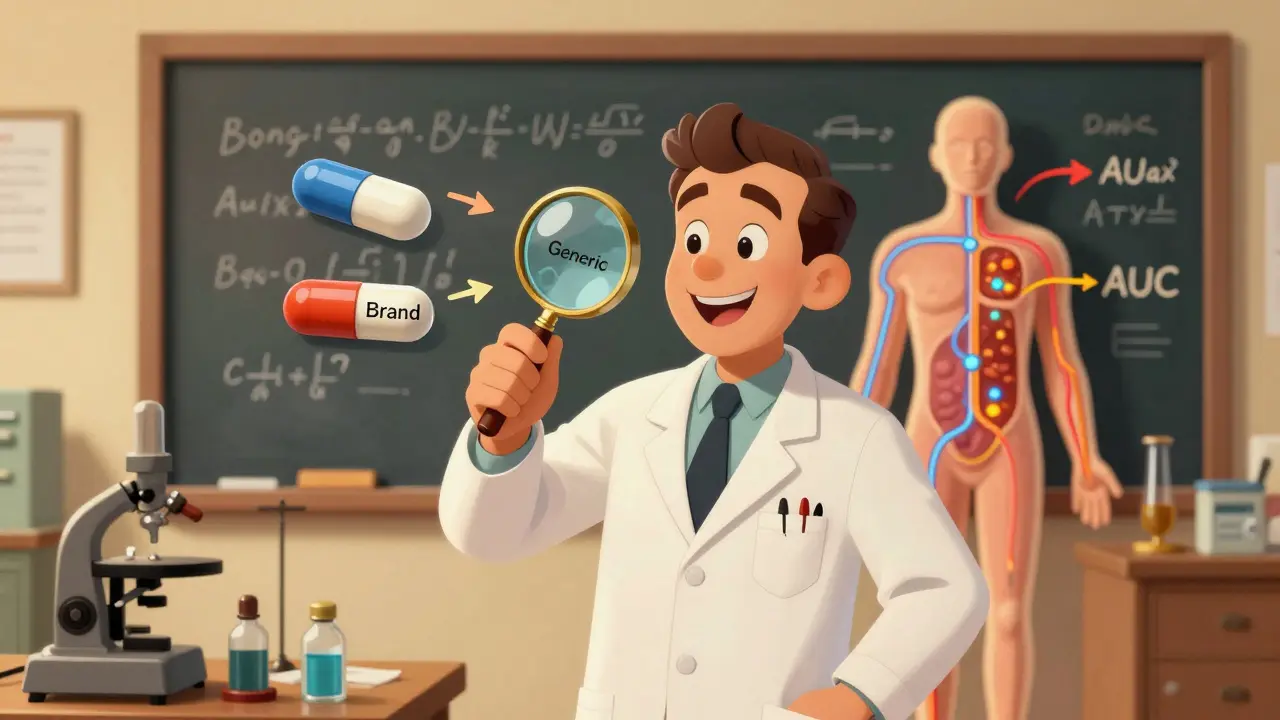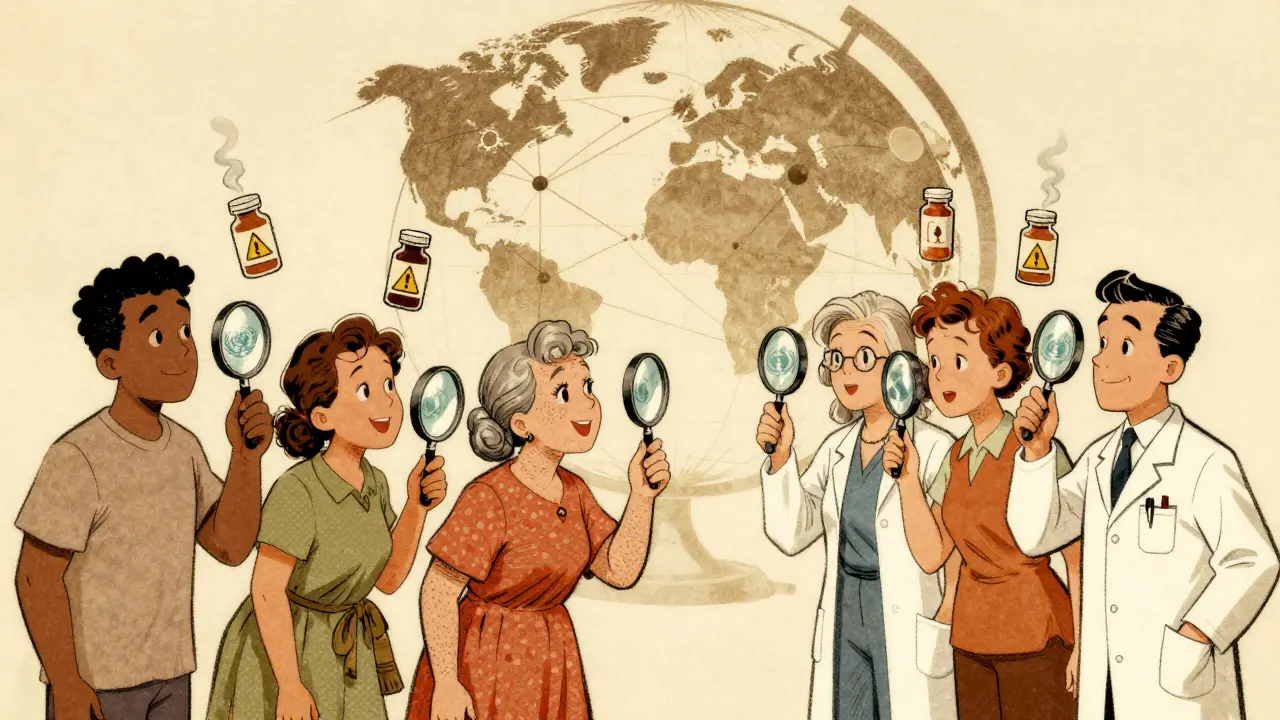Ever notice how the phrase “eat your fruits and veggies” has become a sort of background noise? It’s not just nagging from your childhood. Hidden behind oranges, peppers, and even potatoes, there’s a tiny powerhouse called ascorbic acid making all the difference to your health. Skip a few weeks without it, and your body starts to rebel in sneaky, not-so-obvious ways. You might feel a little extra tired or heal slower from a cut. It’s not magic—just pure chemistry, and it’s as old as scurvy-riddled sailors looking for their next lemon. Let’s pull back the curtain on this vitamin (yep, vitamin C is the tag everyone knows it by), and see why it’s still making headlines, even in 2025.
What Is Ascorbic Acid, and Why Does Your Body Crave It?
Ascorbic acid sounds like something out of a lab vial, but you’ll find it in your juice glass, lunchbox, and medicine cabinet. This is vitamin C in its purest form. And while it seems basic, your body is seriously dependent on it. Humans, unlike most animals, can’t produce ascorbic acid. Somewhere in our genetic shuffle, we lost that ability. So, we’re at the mercy of our diets. When you load up on berries, bell peppers, or toss that lemon wedge in your water, you’re keeping your inner engines humming.
Vitamin C’s best-known gig is as an antioxidant. This means it hunts down lurking free radicals—unstable molecules your body constantly makes from living, breathing, and moving around in a polluted world. Antioxidants like ascorbic acid swoop in before these radicals mess with your DNA, proteins, or cell membranes. It’s like having a good buddy who never lets you go out with spinach in your teeth.
But that’s just the start. Ascorbic acid has more jobs than a college student. Need to make collagen? You can’t do it without enough vitamin C. That’s the protein glue behind strong skin, cartilage repairs, and wound healing. The next time your skin bounces back or a cut closes up, thank ascorbic acid.
Let’s not forget the immune system. While no single food or supplement is a “miracle cure,” there’s real science showing vitamin C supports cells that guard against infection, especially under stress or during tough times. A review in "Nutrients" (2023) found athletes and soldiers facing extreme physical stress often had fewer infections when they kept vitamin C levels topped up. Not just fewer sniffles, but even faster recovery when they did get sick.
Ever wonder why vitamin C is on most supplement shelves? It also helps your body absorb iron—mainly the iron from plant foods, which isn’t as easy for the body to use as the kind in steak or chicken. So pairing a glass of orange juice with your spinach salad isn’t just by accident; it’s nutritional teamwork in action.
If you like numbers, here’s a quick fact: The current Dietary Reference Intake (DRI) for vitamin C is around 90 mg for men and 75 mg for women, bumping up for smokers or during pregnancy. It doesn’t take much—just a cup of strawberries or one bell pepper gets you well past the base level.

Hidden Superpowers: Surprising Uses and Benefits of Ascorbic Acid
People usually think of vitamin C when the next cold hits, but ascorbic acid’s reach goes much further. It’s the fixer in so many behind-the-scenes roles, most of which you probably never pause to consider. Take skin health, for example. Ascorbic acid helps fend off the fine lines and spots you spot in harsh daylight. It pushes your skin’s collagen-building factory into high gear. That translates to firmer skin and a slower crawl toward wrinkles—a 2022 AAD report credited vitamin C serums as a backstage essential for glowing, resilient skin.
But the story doesn’t stop at aesthetics. Ascorbic acid could help your heart, too. Several studies, including a massive 2021 meta-analysis, shared that higher vitamin C intake was linked with lower blood pressure and healthier arteries. It’s not a cure-all, but it adds a layer of defense, like wearing a seatbelt at every speed.
And for your brain? Research from 2024—still hot off the press—shows a connection between vitamin C and sharper memory. Older adults with steady vitamin C intakes had healthier brains than those with low levels, possibly because of the vitamin’s help mopping up those brain-cell-damaging free radicals.
Then there’s your eyes. The American Optometric Association says vitamin C, along with other key nutrients, slows the progression of age-related macular degeneration—the kind of vision loss none of us want to think about, but we should. Some eye formulas combine ascorbic acid with Vitamin E, zinc, and copper for full-circle defense.
Want another wild use? Ascorbic acid is a quiet star in the food world. It’s a preservative, keeping bagged lettuce greener longer and giving shelf life to breads. That’s all thanks to its knack for blocking oxidation (remember those free radicals?). You’ll spot it on ingredient lists as E300 in Europe and plain “ascorbic acid” everywhere else.
Ever made guacamole or fruit salad and watched it turn brown before lunch? Splash a little lemon or lime juice on top. That’s ascorbic acid at work, keeping your apples, pears, and avocados fresh—without those off-putting shades of brown.
Here’s a quick reference table to show where you can find real vitamin C in your daily grub:
| Food | Vitamin C Per Serving (mg) |
|---|---|
| Red Bell Pepper (1/2 cup, raw) | 95 |
| Orange (1 medium) | 70 |
| Kiwi (1 medium) | 64 |
| Broccoli (1/2 cup, cooked) | 51 |
| Strawberries (1/2 cup) | 49 |
Ready for a life hack? If you’re not a fruit fan, roasted Brussels sprouts, baked potatoes, and even fresh parsley are hidden vitamin C heroes. The trick is, cooking can zap a chunk of vitamin C—a water-soluble vitamin—so the less time something spends in boiling water, the more C it keeps. Steaming or microwaving usually protects more of this good stuff.
Worried about doing too much? The body is great at dumping extra vitamin C through urine. But if you pound down grams at a time—think massive supplement doses—you might be booking extra bathroom trips or, rarely, dealing with kidney stones. Stick close to the recommended max of 2000 mg per day, and you’re golden.

Smart Tips, Common Pitfalls, and Busting Vitamin C Myths
Squeeze every drop from your food (and supplements) with a bit of know-how. Sometimes, real life and nutrition don’t match the perfect advice you find online, so let’s keep it realistic. If you’re buying vitamin C supplements, you’ll see labels like “ascorbic acid,” “sodium ascorbate,” and “calcium ascorbate.” These are all forms of vitamin C—the main difference is the sodium or calcium content. Plain old ascorbic acid is usually the cheapest and well absorbed.
Worried about synthetic versus natural? The ascorbic acid in a lab is chemically identical to what you find in your grapefruit, so your body doesn’t know the difference. What does make a difference: food gives you bonus nutrients and fiber you just can’t pop out of a pill. If you’re eating a balanced diet, supplements usually aren’t necessary unless your doctor suggests it.
Some people fall for the myth that loading up on huge vitamin C doses will stop a cold in its tracks. Truth bomb? Studies agree: vitamin C may help shorten the length and reduce the severity of colds, especially for folks under intense stress, but it won’t always prevent one in the first place. If you start pounding C once you feel sick, it’s probably too late for any miracle.
Planning to store citrus fruits or veggies long term? Keep things cool. Room temperature lets vitamin C break down faster. Squeeze up those fresh oranges sooner rather than later. And here’s a cooking tip: don’t soak your cut-up fruits and veggies too long—soaking leeches out some of the precious C.
Kids, smokers, and older adults typically need more vitamin C. Smoking eats up your supply, so smokers are recommended to get an extra 35 mg each day. The same goes for folks healing from wounds or surgery—your body’s using every ounce for repair work.
Here’s how you can get enough vitamin C—no calculators needed:
- Start your day with a citrus fruit, or toss berries on your cereal.
- Add raw bell peppers or broccoli to salads, sandwiches, or wraps for lunch.
- Go for vegetable soups (but add vitamin C-rich veggies near the end of cooking).
- Snack on kiwi or pineapple when you’ve got a sweet tooth.
- Try vitamin C-enriched drinks, but check labels for added sugar.
Still skeptical? One study from "JAMA Network Open" (2022) found that people eating five cups of fruits and veggies daily slashed their risk of dying early from chronic diseases—but just taking a vitamin C pill didn’t have the same impact. Food first—supplements second if needed.
The bottom line? Ascorbic acid is more than just a buzzword for flu season. It’s a key player in keeping you strong, sharp, and charging ahead. Make space for it daily—your body will thank you in a million silent ways. Healthy eating isn’t about chasing the next superfood. Sometimes, it’s about giving props to the everyday heroes—like ascorbic acid—working quietly behind the scenes.







Snehal Suhane
Oh great, another article on vitamin C as if we've never heard about it before. The science is 'backed,' sure, but let's not pretend everyone understands the nuances of ascorbic acid's role without a PhD in biochemistry, right?
Honestly, some of the so-called 'everyday tips' are stuff my grandma already told me decades ago. Boost immunity? Repair your body? Groundbreaking. As if popping a pill or downing an orange will turn you into some health god overnight. It's almost laughable how people swarm these posts expecting magic.
Also, nutrition is a lot more complex than just this one molecule. Anyone who thinks vitamin C alone is a silver bullet clearly hasn't studied the literature or biology deeply enough.
Honestly, the hype around antioxidants is exaggerated, yet it sells like crazy. Remember that every supplement company is out to make a buck off this stuff.
So yeah, while it’s good to know what ascorbic acid does, let’s keep the lionization in check.
Ernie Rogers
I gotta say, it's nice to see some legit info about ascorbic acid here for once. People forget how important vitamin C is for our health and how it’s been part of the American diet for years. Not just some fad.
But I do agree with the original post that the science is solid though it sometimes feels like people underplay how much it actually helps our immune systems. We need to keep pushing this info for everyone out there to know.
Also, it’s not just about popping pills. Eating fresh fruits and veggies rich in vitamin C should be the focus, and it’s what we do best here.
So yeah, this post is a good reminder and gets the basics right. That’s important for daily health, even if it’s kinda obvious.
Eunice Suess
Honestly, I kind of cringed when I saw "science-backed," but then realized the post pretty much nailed it. It's so frustrating how many people just throw around vitamin C without knowing how or why it works. Like, no, vitamin C *does* actually help your immune system. It’s not just some internet myth.
One thing that bugs me is all those viral posts with terrible spelling and grammar. It kinda undermines the info’s credibility.
This article, on the other hand, keeps it mostly clean and informative which is refreshing. Also the point about it being a powerful antioxidant is not overstated here, so props for that.
Still, I'd like to see more on recommended daily amounts and caution about over-consuming, but I guess that might be in a follow-up?
Anoop Choradia
While acknowledging the undeniable benefits of ascorbic acid, I remain circumspect about the wholesale acceptance of mainstream narratives surrounding its widespread usage. It behooves us to scrutinize entirely the origins of such endorsements that border on ubiquity in popular health discourse.
The mechanistic science behind ascorbic acid is irrefutable; its role as a cofactor and antioxidant is well-established. Yet, one cannot dismiss the possibility of commercial interests shaping the narrative to an extent that eclipses less profitable but equally effective health interventions.
Moreover, I posit that the global health agendas prominently featuring vitamin C supplementation may distract from addressing root causes of malnutrition and health disparities.
Hence, while I support clinical utilization based on robust evidence, a discerning perspective is crucial to navigate the intersection of science and socio-economic influences.
bhavani pitta
Honestly, this post is just a typical health puff piece with no new info that truly excites me. Sure, vitamin C is important, but like, do we really need the same old 'boosts immunity' spiel over and over again? It feels so overstated and theatrical sometimes, almost like they want us to think our lives depend solely on this one vitamin.
I mean, why not talk about other essential nutrients in tandem? It's not all about vitamin C, right? We get enough dramatic reading this stuff daily to last a lifetime.
Still, I suppose it’s necessary for those who haven't been paying attention, but it leaves me skeptical about the real impact.
virginia sancho
Hey everyone, I just want to add some friendly advice here. Vitamin C is indeed a potent antioxidant and essential for our body's repair mechanisms, but as with anything, balance is key.
It’s great to incorporate natural sources like oranges, strawberries, and bell peppers into your diet regularly. Supplements can be helpful if you're deficient, but they’re not a cure-all.
Also, remember to stay hydrated and maintain a well-rounded nutrition plan to really maximize the benefits of vitamin C alongside other nutrients.
If anyone here is curious about dosage or timing, feel free to ask—I’m happy to share what research and nutrition guidelines say.
Namit Kumar
Couldn’t agree more with the points about healthy eating supporting vitamin C intake. Here in India, we have a rich variety of natural sources and traditional remedies that many overlook because of western hype around supplements.
It’s thoroughly important that people remember the value of fresh foods and traditional diets. These naturally contain ascorbic acid in balanced amounts that align with our biological needs. Taking mega doses from isolated supplements often doesn’t replicate those effects and can sometimes cause harm.
Plus, the immune system comprises way more factors than just vitamin C; holistic health is about comprehensive lifestyle choices.
Keep up the good discussion on these nutrition topics :)
Sam Rail
This article is helpful, but man, sometimes I just get lazy reading these deep dives. The takeaway: vitamin C is good for you, helps your body, and you should eat your fruits. Done and done.
Seriously though, it’s useful info for anyone who didn’t get the memo already. Appreciate that it’s science-backed, so you’re not just guessing.
If you just wanna feel healthier without researching, maybe this is a good start.
Taryn Thompson
It's wonderful to see a well-rounded post on ascorbic acid that covers both the basic science and practical uses. Vitamin C not only works as an antioxidant but also plays a crucial role in collagen synthesis which is vital for skin health and wound repair.
I often encourage clients to incorporate vitamin C-rich foods as part of a daily regimen, especially in colder seasons, to support immune defenses.
Moreover, it’s important to remember that ascorbic acid enhances iron absorption from plant-based diets, which can be significant for those following vegetarian or vegan lifestyles.
If someone’s considering supplements, checking with a healthcare practitioner is advisable to determine appropriate doses that won't interfere with other medications or conditions.
Lisa Lower
Okay, let’s get excited about ascorbic acid because seriously, this humble vitamin might just be one of the most profoundly impactful nutrients we often overlook! It’s not just about immune function — I mean, sure that’s a big ticket, but think about its role in repairing tissues, supporting brain function, and combating oxidative stress.
The synergy with other nutrients is fascinating too, especially how it regenerates other antioxidants in the body.
For anyone who's looking to improve their wellness holistically, prioritizing vitamin C intake is an excellent, evidence-based step that shouldn't be skipped.
Also, don’t forget the mental boost it gives through stress reduction; science is starting to illuminate those pathways more clearly now.
If you’re on the fence, just try incorporating vitamin C-rich foods consistently and see how much better you feel in weeks.
Dana Sellers
Listen, it’s about time people stop ignoring vitamin C’s vital role. It’s simple, essential, and the science is clear enough even for skeptics out there. No more excuses.
Seriously though, if you want to stay healthy and not always catch colds, pay attention to your daily intake. There’s no reason to risk your health by neglecting such an easy fix.
Wake up, people! Vitamin C isn’t optional; it’s a crucial part of surviving this mess we call life.
And don't get me started on those who think natural food sources aren't enough — news flash! Supplements are for emergencies or deficiency, not they don’t replace eating your fruits.
End rant. Just do better with your health!